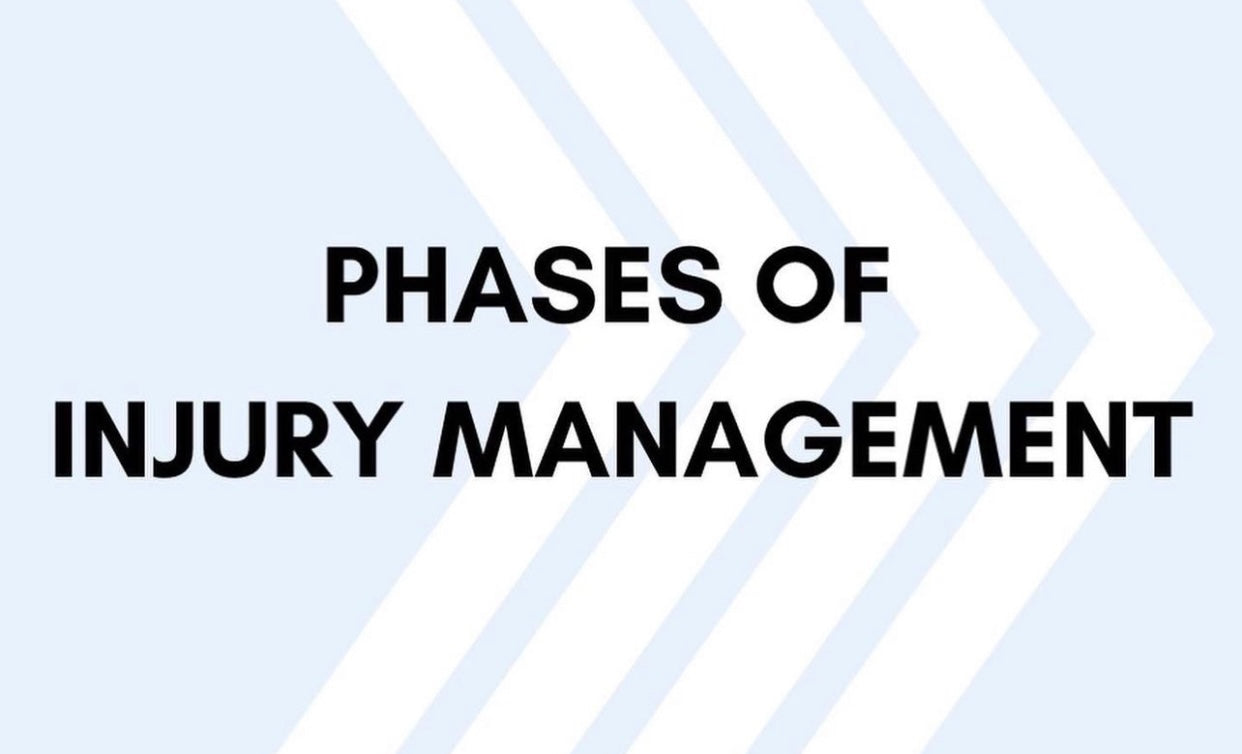
The Phases Of Injury Management
It’s now the end of February and most winter sports athletes are smack bang in the middle of preseason. Loads are high, the fatigue is starting to set in and niggles are raising their heads. Some athletes will ignore these niggles and push on without giving them a second thought.
Anyhow, who needs two functioning hamstrings to get through a footy season? Unfortunately, pre-season niggles can escalate to in-season injuries if they are not managed appropriately.
So how do we manage these niggles and create the best possible environment for all the preseason work to pay off? It’s critical to understand the three stages of injury management and strive towards identifying and managing potential issues before they raise their heads.

THE PHASES OF INJURY MANAGEMENT
Primary
The primary phase involves identifying and managing potential risk factors to injury before they even occur. For example, a junior basketballer is about to start ATAR exams and has 2 games of basketball on them weekend. Their S&C coach identifies multiple risk factors:
1. The athlete is likely to be sitting at a desk studying for sustained periods. This can lead to hip flexor tightness, neck and back pain, and reduced activity level.2. The athlete is likely to be sleeping less and recovery strategies are not optimal
3. Stress levels will be higher than usual, and the athlete may not be as focused during training and games
All of these factors can lead to increased injury risk. If the coach can identify these risk factors early, they can modify their program to incorporate more hip and back mobility, emphasise the importance of recovery, and regularly check in on the athlete. Loads don’t necessarily have to change, but a greater level of awareness goes a long way.
Senior athletes have more self-awareness and should be thinking of these primary management strategies themselves. It’s important that athletes develop a good read of their own bodies and how they respond to different loads and stresses, both physically and mentally. By reporting potential risks to their coach/physio/support team, athletes can help mitigate any concerns before they
even arise.
Secondary
Most athletes in preseason will be in this secondary phase where niggles are setting in and fatigue is high. When athletes move into this ‘risk factor territory,’ it’s critical to implement monitoring and management strategies as early as possible. Good athletes will address these niggles and invest in the time to get things right now rather than wait for them to deteriorate.
Secondary management includes:
1. Appropriate recovery strategies
2. Self-monitoring and screening
3. Physio and health practitioner support
4. Modifying loads if needed
Your coaches and physios play a key role in helping athletes through this secondary phase. Physios are not just there to fix your pain and manage your injuries – they’re also there to help you perform at your best and be a sounding board as you build an understanding of your own body and how it responds to load.Leaning on the support team around you in this phase is crucial, and it’s important to maintain communication with your physios and coaches to ensure they can jump on any niggles as soon as possible.
Tertiary
Unfortunately even with the best management and programming, athletes still get injured. There is no bulletproof strategy of injury prevention, and sometimes people just have pure bad luck. However, injuries themselves can be used to learn and grow, and potentially can help athletes and their support staff build a greater understanding of how to approach future situations. It’s easy to look back and ask what went wrong when an athlete does get injured.But I encourage everyone to also reflect on the injuries that could have arisen, but didn’t, due to early identification and intervention.

Written by Jess Bell, Perform HQ In-House Physiotherapist.